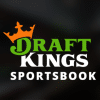Did you know that 7 out of 10 new bettors lose money simply because they don’t understand betting odds?
It’s a costly mistake that trips up countless beginners. While the numbers and symbols might look like a complex math puzzle at first glance, betting odds actually tell a simple story – your potential winnings and the likelihood of an event happening.
Many new bettors jump straight into placing bets without grasping these basics, leading to confusion, frustration, and empty wallets. Understanding betting odds isn’t just about knowing what +250 or 3.50 means – it’s about making informed decisions with your money.
Whether you’re planning to bet on sports, horse racing, or any other event, mastering odds is your first step toward smart betting. Let’s break down everything you need to know about betting odds in simple, clear terms.
Betting Odds Fundamentals
Betting odds are more than just random numbers – they’re a sophisticated system that tells you two crucial things: how likely something is to happen and how much money you could win. Think of odds as the language of betting, speaking volumes about risk and reward.
What Betting Odds Actually Represent
Betting odds are essentially probability translated into numbers. They show the likelihood of an event occurring, whether it’s a team winning a match or a horse crossing the finish line first. The math underlying these odds helps determine if a wager is worth pursuing. While odds come in different formats – American (+/-), decimal, or fractional – they’re simply different ways of presenting the same probability.
The House Edge Explained
The house edge is the mathematical advantage that every gambling venue maintains over bettors. Here’s how it typically works:
- The odds displayed never reflect the true probability
- A profit margin is always added by the bookmaker
- Payouts are always less than what they should be based on true probability
- The house edge helps cover operational costs and ensures profit
For example, in sports betting with standard -110 odds, the house edge is approximately 4.55%. This means that to break even, you’d need to win about 52.4% of your bets – a task that’s much harder than it sounds.
Why Odds Change Over Time
Betting odds are dynamic and change for several compelling reasons:
- Market sentiment and betting volume
- Breaking news about teams or players
- Weather conditions and external events
- Bookmaker’s need to balance their books
When large amounts of money are placed on one outcome, bookmakers adjust odds to encourage betting on the other side. Similarly, if a star player gets injured, odds quickly shift to reflect the team’s reduced chances of winning. These adjustments ensure that bookmakers maintain their profit margin while offering competitive odds to bettors.
Understanding these fundamentals is crucial because odds aren’t just arbitrary numbers – they’re carefully calculated values that reflect both probability and profitability. The more you understand how they work, the better equipped you’ll be to make informed betting decisions.
Common Betting Odds Formats
Let’s explore the three main ways betting odds are displayed worldwide. Each format tells the same story but speaks a different numerical language.
American Odds (+/-) Explained
American odds, also known as moneyline odds, use plus (+) and minus (-) symbols to indicate potential payouts. The system is centered around $100 bets:
- Positive odds (+150) show how much you’d win on a $100 bet
- Negative odds (-150) show how much you need to bet to win $100
For example, if you see +300, a $100 bet would win you $300. With -300, you’d need to bet $300 to win $100.
Decimal and Fractional Odds Basics
Decimal odds are popular in Europe and Australia, showing your total return including your stake. A $10 bet at odds of 2.50 would return $25 (your $10 stake plus $15 profit).
Fractional odds, common in UK horse racing, show profit relative to stake. A 5/1 (five-to-one) odds means you’ll win $5 for every $1 bet, plus your stake back.
Here’s a quick comparison of the same bet in different formats:
| Probability | American | Decimal | Fractional |
|---|---|---|---|
| Even Money | +100 | 2.00 | 1/1 |
| Favorite | -150 | 1.67 | 2/3 |
| Underdog | +200 | 3.00 | 2/1 |
Converting Between Different Formats
While each format has its merits, converting between them is straightforward:
- American to Decimal:
- For positive odds: (American/100) + 1
- For negative odds: (100/|American|) + 1
- Decimal to Fractional:
Simply subtract 1 from the decimal odds and convert to a fraction. For example, 2.50 becomes 3/2.
Remember that regardless of format, the underlying probability and potential payout remain the same. The key is finding the format that makes the most sense to you and sticking with it.
Reading Odds Like a Pro
Once you’ve mastered the different odds formats, it’s time to develop your ability to read them quickly and effectively. Professional bettors can instantly spot value in odds, and with practice, you can too.
Identifying Favorites and Underdogs
The quickest way to spot favorites and underdogs is through the odds display. In American odds, the minus (-) sign always indicates the favorite, while the plus (+) shows the underdog. For example:
| Team | Odds | Status |
|---|---|---|
| Chiefs | -760 | Heavy Favorite |
| Steelers | +585 | Clear Underdog |
The larger the gap between the numbers, the more lopsided the matchup is perceived to be. When odds are close (like -105 vs +100), you’re looking at a nearly even contest.
Understanding Implied Probability
Implied probability reveals the actual likelihood of an event happening according to the odds. Here’s what makes it crucial:
- Helps identify value bets
- Shows true risk vs. reward
- Reveals the bookmaker’s edge
To calculate implied probability from American odds:
- For negative odds: (-odds) / (-odds + 100) × 100
- For positive odds: 100 / (odds + 100) × 100
Real Examples from Popular Sports
Let’s look at how this works in practice. Take a baseball game where the Phillies are +120 underdogs against the Mets at -130. This means:
For the Mets (-130):
- You need to bet $130 to win $100
- Implied probability: 56.5%
- The bookmaker sees them as the likely winner
For the Phillies (+120):
- A $100 bet wins you $120
- Implied probability: 45.5%
- Considered less likely to win, but offers better payout
The total implied probability exceeds 100% (102% in this case) – that’s the bookmaker’s edge, also known as the “vig” or “juice.” This built-in advantage explains why consistently beating the odds requires more than just picking winners.
Remember that odds can shift based on betting patterns and new information. A dramatic line movement might indicate sharp bettors (professionals) have identified value, while gradual changes often reflect public betting patterns.
Smart Odds Comparison
Success in betting isn’t just about understanding odds – it’s about finding the best ones. Smart bettors know that comparing odds across different platforms can significantly impact their potential returns.
Using Odds Comparison Tools
Modern technology has revolutionized how we compare betting odds. Odds comparison tools and aggregators serve as your digital scouts, scanning multiple bookmakers simultaneously. These platforms offer several advantages:
- Real-time odds updates every few minutes
- Filtered results based on your location
- Direct links to bookmakers
- Historical line movement data
The key is choosing reliable comparison tools that feature regulated, market-leading sportsbooks in your region. This ensures you’re not just getting the best odds, but also betting with legitimate operators.
Spotting Value in Different Markets
Value occurs when bookmakers offer odds that don’t accurately reflect an event’s true probability. Here’s how professional bettors identify value:
| Market Type | What to Look For | Why It Matters |
|---|---|---|
| Main Markets | Significant odds disparities | Higher liquidity, easier to place bets |
| Props/Alternatives | Larger price differences | Less efficient pricing, more value opportunities |
| Live Betting | Quick odds movements | Opportunities during market adjustments |
Remember: Value isn’t just about finding higher odds – it’s about finding odds that offer a better price than the true probability suggests.
Line Shopping Strategies
Line shopping is essentially price comparison for betting odds. Here’s a systematic approach to finding the best lines:
- Compare Commission Rates
- Look for sportsbooks offering -105 instead of -110
- Lower commission means better long-term value
- Monitor Line Movements
- Track odds changes over time
- Understand why lines are moving
- Act quickly when you spot value
- Focus on Specific Markets
- Start with familiar sports
- Develop expertise in particular betting types
- Learn bookmaker tendencies for different markets
The most effective line shoppers maintain accounts with multiple sportsbooks and understand each platform’s strengths. Some books consistently offer better odds on favorites, while others provide value on underdogs.
By actively comparing odds and understanding market movements, you can significantly improve your potential returns. Even small differences in odds can have a substantial impact on your long-term profitability. Professional bettors often say that finding the best odds is just as important as picking winners.
Avoiding Common Beginner Mistakes
Even experienced bettors can fall into common traps, but new bettors are particularly vulnerable to costly mistakes. Understanding these pitfalls is crucial for protecting your bankroll and developing sustainable betting habits.
Not Understanding the Vig/Juice
The vig (or juice) is the hidden cost of betting that many beginners overlook. It’s essentially the commission that sportsbooks charge for taking your bet. Here’s how it impacts your bottom line:
| Bet Amount | Standard Odds (-110) | Required Win Rate |
|---|---|---|
| $100 | Win $90.91 | 52.38% |
| $500 | Win $454.55 | 52.38% |
| $1000 | Win $909.10 | 52.38% |
To overcome the vig, you need to win more than 52.38% of your bets at standard -110 odds. This means that even if you’re winning half your bets, you’re still losing money over time. Smart bettors actively seek reduced juice opportunities and compare vig rates across different sportsbooks.
Chasing Bad Odds
One of the most dangerous behaviors in sports betting is chasing losses. This often leads to:
- Increasing bet sizes to recover previous losses
- Betting on unfamiliar sports or markets
- Making emotional rather than logical decisions
- Ignoring proper bankroll management
- Placing bets with poor odds out of desperation
The key to avoiding this trap is maintaining strict discipline with your betting strategy. Never increase your standard bet size to chase losses, and always stick to your predetermined bankroll management plan.
Ignoring Line Movement
Line movement tells a story that many beginners fail to read. Understanding why odds change is crucial for making informed betting decisions. Smart bettors pay attention to:
- Sharp Money Indicators
- When lines move against public betting percentages
- Sudden shifts in odds at respected sportsbooks
- Early morning line movements
- Market Efficiency
- How quickly lines adjust to new information
- The difference between sharp and square sportsbooks
- The timing of line movements
Professional bettors track line movements because they understand that odds changes reflect valuable information. When sharp money comes in on one side, it often indicates that professional bettors have identified value that the public hasn’t recognized.
To avoid these common mistakes, develop a systematic approach to betting. Set clear rules for your betting strategy, including maximum bet sizes and loss limits. Track all your bets and regularly review your performance to identify patterns and areas for improvement.
Remember that sportsbooks profit from bettors‘ mistakes. They know that most beginners will chase losses, ignore the impact of vig, and fail to understand line movement. By avoiding these common pitfalls and approaching betting with discipline and understanding, you’ll already be ahead of most recreational bettors.
Conclusion
Betting odds might seem complex at first glance, but mastering their interpretation stands as your foundation for smart betting decisions. Armed with knowledge about different odds formats, implied probability calculations, and line movement patterns, you can make more informed choices and spot valuable opportunities.
Smart betting requires more than understanding the numbers – it demands discipline, strategic thinking, and careful odds comparison across platforms. Remember that successful bettors focus on finding value rather than chasing losses, while maintaining strict bankroll management practices.
Most importantly, treat betting as a skill that improves with practice and patience. Start small, focus on markets you understand, and always compare odds across multiple bookmakers. Your success in sports betting largely depends on your ability to read, compare, and act on odds effectively while avoiding common pitfalls that trap many beginners.









